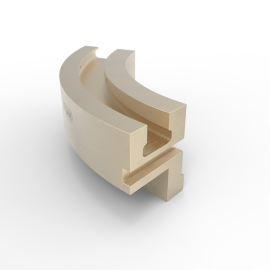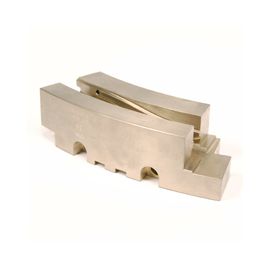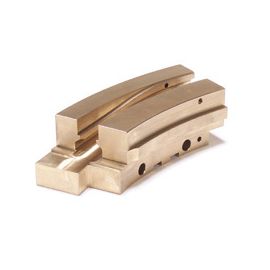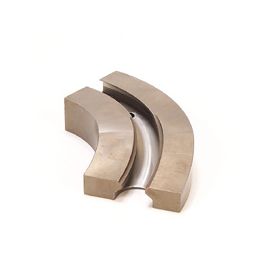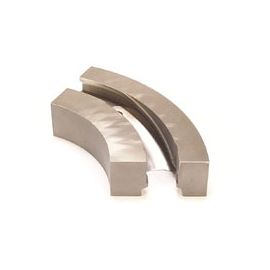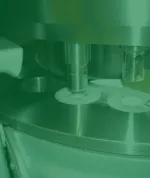Tablet Press Fill Cams: What They Do and When to Replace Them
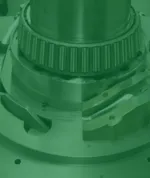
Tablet weight uniformity is one of the most important factors in tablet manufacturing. If the fill is incorrect, tablet compression errors, tablet ejection force problems, and even packaging issues can happen. That's why the fill cam is important. It helps control how much powder enters each die cavity before compression.
When the fill cam in a tablet press machine is worn, damaged, or the wrong size for your formulation, you get irregular fill weights, low production yields, and misshapen tablets. It is critical for any manufacturer running high-speed tablet presses to keep the fill cam in good condition.
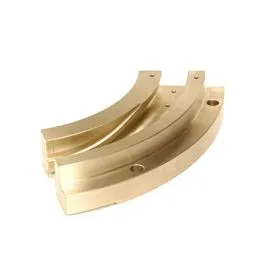

What is a Fill Cam in Tablet Press Machines?
A fill cam is an important tablet press part that is critical to the filling stage of the tableting process. The fill cam controls these main things:
- Fill Depth: The fill cam determines how deep the lower punch is during the filling stage. The fill cam fills the entire die bore with the powder. The dosing meter (or dosing cam) then pushes out all of the excessive powder to meet the tablet weight the machine is tuned to. This sets the weight of each tablet. A deeper cavity in the die means more powder can be filled; conversely, a shallower die cavity allows for less powder.
- Punch Movement Timing: The fill cam controls the movement timing of the lower punches during the filling stage. It lifts and drops the punches at the appropriate time as the die goes under the feeder.
Here are a few other functions to consider:
- Die Filling: The fill cam's primary function is to guide the lower punches downward to their lowest point, allowing powder to flow into the open die cavities.
- Overfilling: The fill cam is designed to intentionally and consistently, overfill the die cavity with powder, as the dosing cam will later eject the excess.
- Consistent Weight: Proper fill cam selection is essential for achieving consistent tablet weights with minimal recirculation of excess granulation.
- Clean Press Operation: An improperly sized fill cam can lead to powder accumulation on the die table or in the feeder, affecting tablet quality, press operation and high yield loss of granulation.
The fill cam is located underneath the tablet press die table and makes contact with the lower punches, which move up and down within the dies. As the tablet press operates, the turret rotates and the fill cam lowers the punches, allowing powder to fill the dies. The punches are then raised back up to prepare them for compression.
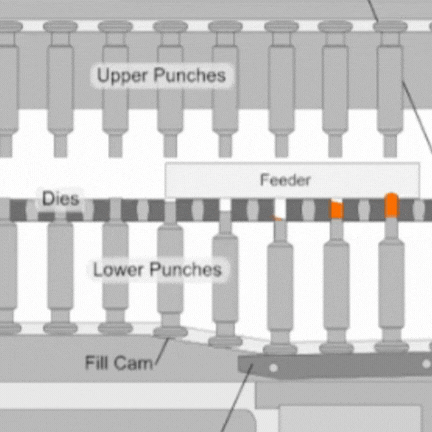

From the outside view, the fill cam is not visible; it is located inside the tablet press. Although it is out of sight, it is key to ensuring that each tablet contains the proper amount of formulation powder.
Why Does the Fill Cam Matter in Making Tablets?
The fill cam directly affects tablet weight, tablet strength, and overall production efficiency. When the fill cam is in good condition and has been properly adjusted, each die cavity can be filled with the correct amount of powder. This makes sure that each tablet meets the set weight and content specifications.
The fill cam determines how much the die cavity will overfill. Overfill is needed to get good, consistent tablet weight. Consistent flow of granulation into the die cavity will provide the needed reproducibility and consistency, tablet to tablet. Too much overfill means that a high percentage of powder in the die cavity gets pushed out or removed and must travel back into the feeder.
Here are some problems that occur if the tablet press fill cam is worn, damaged, or incorrectly adjusted:
- Tablet Weight Inconsistencies: When the die cavities aren’t filled uniformly, some tablets may come out heavier or lighter than according to the set specifications. Even small differences can result in batches filing inspections.
- Underfilled Dies: If the punches don’t drop low enough, some dies won’t receive enough powder. This can cause cracked, broken, or weak tablets.
- Powder Waste: When the dies aren’t filled correctly with powder, product can spill over or get sucked away by the vacuum system. This lost product can add up and reduce the overall yield.
- Rejected Tablets: Tablets that are off specification can’t be sold. They either need to be scrapped or reworked, which increases costs and causes production delays.
- Batch Failures: Too many rejected tablets can force a manufacturer to discard an entire batch, especially if active ingredients are involved and there’s a risk of dosage inconsistency.
- Lower Efficiency: When manufacturers repeatedly make adjustments to correct fill issues, production slows, changeovers take longer, and maintenance costs rise.
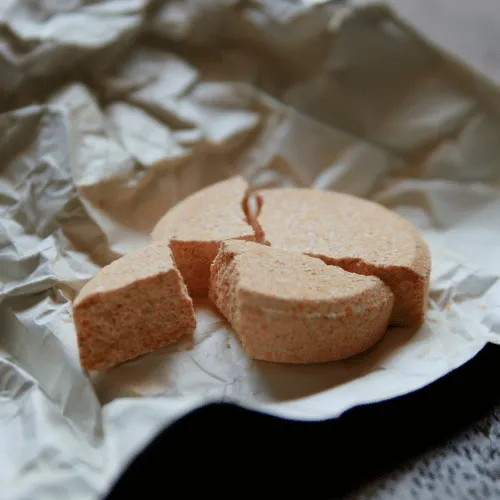

A bad fill cam affects all aspects of production, from tablet quality to the final profit margin. That is why regular inspection, maintenance, and replacement is important for any tablet manufacturer that ways to stay efficient and competitive.
Signs It's Time to Replace Your Fill Cam
Over time, normal wear and tear can affect how a tablet press fill cam performs. If you start seeing any of these signs, it’s probably time to replace it:
- Inconsistent Fill Weights: If tablet weights are going outside of the target range, even after making the proper adjustments, the fill cam could be the issue. Worn fill cams cause uneven fills because they no longer move the lower punches correctly.
- Visible Wear or Grooves: Grooves, flat spots, or rough areas where the punches ride on the fill cam are obvious indications of wear due to tight or seized lower punches. These damages can throw off punch movement and cause incorrect fills.
- Poor Fit or Movement: If the punches feel loose, sticky, or uneven as they move over the cam, the fill cam might be warped, worn, or damaged. A quality fill cam should help the punches move smoothly during the filling process.
- Increased Tablet Rejections: A higher number of rejected tablets, particularly due to weight or hardness issues, can be a sign of a fill cam problem. If the tablet press tooling is in good condition but rejections keep happening, the fill cam may be worn.
- Operator Adjustments Not Resolving the Problem: If operators are constantly making adjustments to the press, such as feeder adjustments, punch depth changes, or vacuum settings, and there are still tablet weight issues, the fill cam could be the cause.
A fill cam usually doesn’t wear overnight and problems build up slowly. This is why regular inspections and having spare fill cam parts on hand is key. Catching a defective fill cam early on can help avoid larger yield losses and batch failures later.
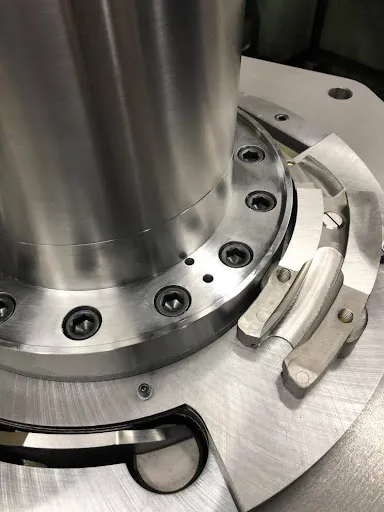

Fill Cam Replacement Options
When it’s time to replace a fill cam, it’s important to select the right one for your process. Not all fill cams are the same, and choosing the wrong size or material can result in new problems instead of solving old ones.
- Different Fill Cam Sizes: Fill cams are available in various sizes for different dosing requirements. Common fill cam sizes range from 6 mm to 22 mm, and the size chosen depends on how much powder needs to be in each tablet. Smaller fill cams are used for low-dose tablets, while larger cams are needed for larger tablets or higher doses.
- With an incorrectly sized fill cam, the granulation travels repeatedly into and out of the feeder and dies, a process called overworking the granulation. The more the granulation recirculates and travels through the feeder system, the more likely the granulation will break down into fine particles or dust. This causes tablet weight fluctuation and density issues. To prevent this problem, select the proper fill cam to get a minimum overfill of no more than 20% by volume within the die cavity. Experimenting with different size fill cams will help determine the correct fill cam needed to produce the most consistent tablet in the most efficient manner.
- Material Options: Most fill cams are made from strong materials like bronze, but some applications may call for hardened tool steel with specialty coatings. Bronze is popular due to its high wear resistance and smooth movement without harming the punches. Choosing the right fill cam material helps to extend the life of both the fill cam and the punches that ride on it.
- Compatibility with Tablet Press Machine: To ensure compatibility with your tablet press, replacement fill cams must match its design and specifications. Confirm that the cam is the correct size for your turret and matches the cam track profile. This can help guarantee that punches travel smoothly and that the dies are properly filled.


The tablet press fill cam may not be the most front-and-center part, but it has a significant impact on the success of each batch. A worn or damaged fill cam can lead to irregular tablet weights, wasted powder, more rejected tablets, and lower yields. As part of your maintenance routine, you should inspect fill cams on a regular basis. Look for signs of wear, such as grooves, rough spots, or poor punch movement, so you are proactive if any production issues happen.
Replacing a worn fill cam early is a simple and effective way to protect your tablet press machine, maintain tablet quality, and keep your manufacturing process on track. Regular preventive maintenance not only extends the life of the fill cam, but also helps to avoid larger, more expensive problems throughout the tableting process.
Staying ahead of fill cam wear is a small step that makes a big difference. If you need replacement fill cams for your tablet press, Scheu & Kniss can help. We offer high-quality parts built for OEM compatibility with tablet press machines from Fette, Cadmach, Manesty, Kilian, and more. Contact us today to get the right part for your tablet manufacturing.




